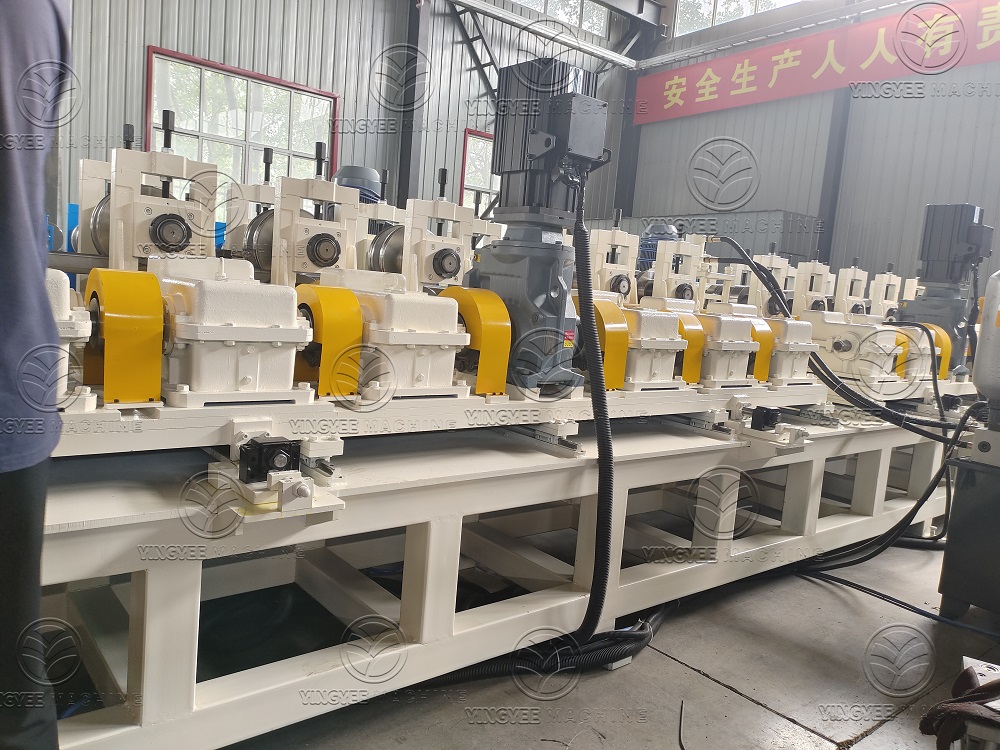
The Evolution of Stud and Track Making Machines
In the realm of manufacturing and construction, the importance of precision and efficiency cannot be overstated. One of the pivotal innovations that have transformed this sector is the stud and track making machine. These sophisticated devices are designed to produce metallic studs and tracks used extensively in framing systems for walls and ceilings, particularly in commercial and residential buildings.
Understanding Stud and Track
Before delving into the significance of stud and track making machines, it's essential to understand what studs and tracks are. A stud is a vertical structural member in framing walls, while a track serves as a horizontal counterpart that supports the studs at the top and bottom. Together, they create a sturdy framework that can support various building materials, from drywall to insulation. The quality and precision of these components significantly impact the overall integrity and durability of a structure.
The Need for Automation
Traditionally, studs and tracks were manufactured manually, a process that was not only labor-intensive but also prone to inaccuracies. Manual fabrication could lead to inconsistencies in size and shape, which could compromise structural integrity. As demand for construction materials surged, particularly during periods of rapid urban development, manufacturers sought ways to automate the production process. Thus, the stud and track making machine was born.
Features of Modern Machines
Modern stud and track making machines are marvels of engineering. They come equipped with state-of-the-art technology that allows for the quick and precise production of studs and tracks. These machines typically consist of several components, including a roll-forming unit, cutting mechanism, and control system. The roll-forming unit is responsible for shaping the metal sheets into the desired profiles, while the cutting mechanism ensures that each piece is cut to the exact length required. The control system, often computer-controlled, allows operators to input specifications, ensuring consistency across large batches.

One of the significant advancements in these machines is the ability to produce multiple sizes and profiles from a single setup. This adaptability not only saves time but also minimizes material waste, making it a cost-effective solution for manufacturers. Some advanced models can even automatically switch profiles based on production needs, enhancing efficiency further.
The Impact on the Construction Industry
The advent of stud and track making machines has had a profound impact on the construction industry. By enabling manufacturers to produce high-quality materials quickly, these machines have helped meet the growing demand for building components without compromising on quality. The efficiency gained through automation allows for faster project timelines, which is particularly crucial in an industry where time often equates to money.
Moreover, the precision offered by these machines has improved the overall quality of construction. With consistently sized and shaped studs and tracks, contractors can achieve better alignment and stability in their structures. This factor enhances not only the aesthetic appeal of a building but also its safety and durability.
Future Prospects
As technology continues to advance, the future of stud and track making machines looks promising. Innovations such as smart manufacturing, IoT integration, and sustainable practices are likely to further revolutionize the production process. Manufacturers are already exploring the use of materials with superior properties that can be shaped efficiently, leading to even more robust and lightweight framing systems.
In conclusion, stud and track making machines have become indispensable in modern construction. They embody the intersection of innovation and necessity, driving the industry towards greater efficiency, quality, and sustainability. As we move forward, these machines will undoubtedly continue to evolve, shaping the very foundations of our buildings and, by extension, the environments we inhabit.